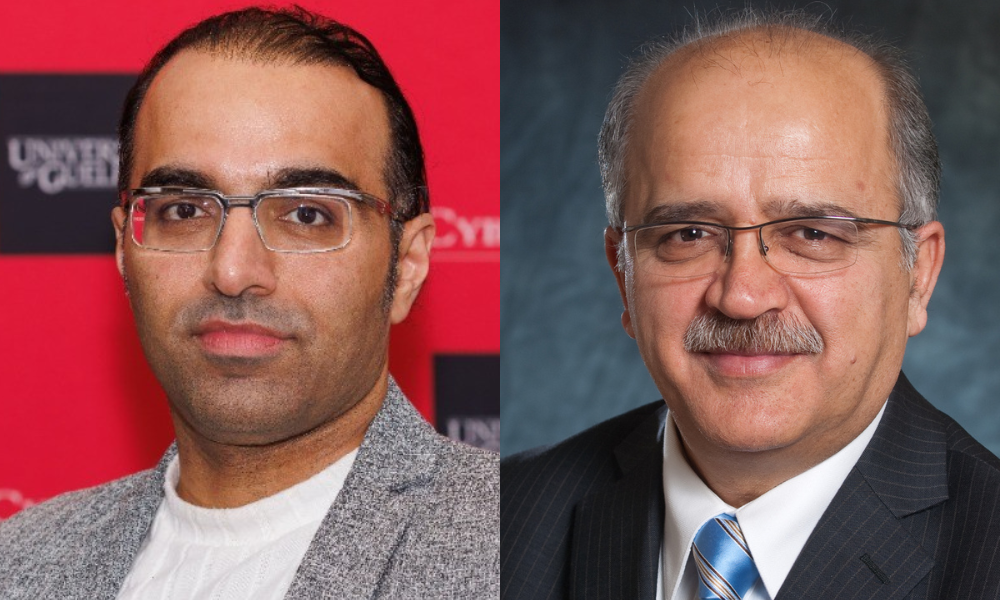Establishing an appropriate ecosystem can maximize return on investment

In an innovation-driven economy, diversity and inclusion are key factors to success, according to Renée Bazile-Jones, senior director of learning at the Canadian Centre for Diversity and Inclusion in Toronto.
The terms can be viewed as an ecosystem supporting both freshwater and saltwater fish, she said at a SCNetwork event in Toronto.
“Think about your organizational culture, and the environment that people work in as an ecosystem,” said Bazile-Jones. “What happens if you put the wrong type of fish in the wrong water? They die. No more Nemo.”
Employers need to ensure the underpinnings of culture at their organization are supportive of all workers, she said.
Ecosystem considerations include attitude towards and treatment of staff, corporate infrastructure, policy and application.
Without a healthy framework in place, diverse employees will refrain from participating in ideation, said Bazile-Jones.
“It’s your brightest and best people who will leave you — the innovators — depending on the calibre of the workplace environment, your ecosystem.”
Rather than treating all employees the same, inclusivity favours treating people as individuals, she said.
“It is important for us to create workplace environments where we’re very comfortable with people being their genuine (selves). And that means getting to know people aside from name, rank, serial number, where they fit in the organization.”
“It also means having genuine conversations so that we in turn can be respectful of the traditions that you say define you as a human being.”
The golden rule needs to be replaced by platinum — treat others as they wish to be treated, said Bazile-Jones.
“There are opportunities here to have a direct impact on your bottom line, or however you measure success, by entrenching the ecosystem and to ensure that there’s a place for everyone to feel included — following that platinum rule, not on your terms, but on theirs.”
Defining diversity, inclusion
Among Canadian organizations, diversity and inclusion are often misunderstood as representation, said Bazile-Jones.
“Often in my conversations with people, their definition of diversity is really about representation, and that’s a numbers game. It’s only about the types of people who are present in your workplace.”
Representation supports diversity and inclusion solely in terms of visible differences, she said.
“It’s critical for us to think about how broad the scope is when we talk about diversity, and to also think about our behaviour when we talk about inclusion,” said Bazile-Jones.
“It is about the mix, our ethnicity, our gender. It is about is about sexual orientation — differences that we can see. But diversity is also about differences that you can’t see,” she said.
Diversity is made up of multiple dimensions, beginning with personality, according to Bazile-Jones.
“We are who we are when it comes to our personalities,” she said. “Are we introverted? Are we extroverted? Those are core to who we are as individuals.”
After that, diversity includes primary dimensions such as age, place of origin, sexual orientation and thinking style, said Bazile-Jones.
Secondary dimensions include descriptors such as language, location, relationship status or religion, she said, noting individuals have more opportunity for choice in this sphere.
Finally, all humans are affected by a global dimension, which includes political systems, legislation and world events.
“Intellectually, we know that the person sitting next to us is not us,” said Bazile-Jones.
“The question becomes then: How do we acknowledge those differences? What do we do in terms of our behaviour?”
Establishing ROI
Most return on investment (ROI) is measured through simple financial gain or loss. However, the key parameter in terms of diversity and inclusion is levels of employee engagement, she said.
In general, high levels of diversity combined with high levels of inclusion lead to major increases in engagement, productivity and performance — by more than 100 per cent, said Bazile-Jones, citing research by Deloitte.
“That’s a compelling argument if you’re trying to move your organization forward. When you look at what constitutes high engagement, it’s really an outcome of diversity and inclusion… Certainly from our experience, you need both.”
Positive perception towards diversity and inclusion have also been shown to boost team collaboration by 57 per cent, improve market share by 45 per cent, and increase employee retention by 19 per cent, she said, and it is important for human resources to pitch diversity and inclusion measures with that type of ROI.
“At some point, you’ve got to sell this. It may not necessarily always be dollars that you’re talking about when you’re looking at return on investment.”
The diversity and inclusion conversation is shifting from “nice-to-do” to investment in performance, making it important to measure it alongside other business initiatives, said Bazile-Jones.
“If you’re looking at the idea of creating that business case, where you’re focused on the return on investment, those measurements and analytics will provide the building blocks that you need to make a really strong business case argument. Because the truth of the matter is you can’t do this work without money.”
Diversity and inclusion strategies should be implemented in a change management style, with consideration of the competitive advantage internal staff will bring long-term, she said.
Other measurements include employees’ level of cultural competence and recognition of diversity and inclusion, demographic representation, organizational culture and community perceptions.
Employee surveys and sessions can be a quality data source to aid HR in mapping and tracking progress and making evidence-based decisions. Both qualitative and quantitative evidence are necessary to define the issues facing individual organizations, said Bazile-Jones.
“The starting point is: ‘Who is in my workforce and what are their needs?’ You can do that on your own,” she said.
“It also provides an opportunity for you to create actual strategies to address the very things that may be barriers to your long-term sustainability and success.”
“Part of your calling card is to look at the organization, understand what issues may be barriers to attracting a range of people… and not just differences that you can see, but that intellectual capacity, those innovators as well.”




